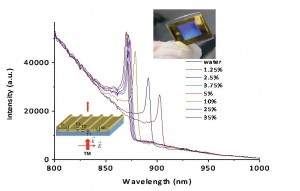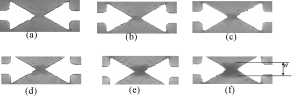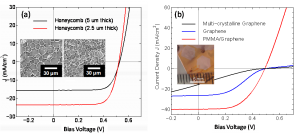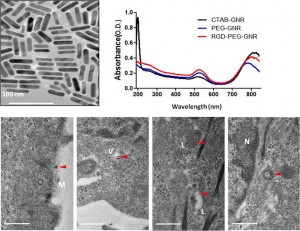Highlights of IEEE Nanotechnology Magazine – March 2016 Issue
- Periodic metallic nanostructures for high-sensitivity biosensing applications
Kuang-Li Lee and Pei-Kuen Wei
Surface plasmon resonance (SPR) sensing is a real-time and label-free detection technique. To reach the best biosensing performance, sensors with high surface sensitivities and small resonance linewidth are required. We proposed using hot-embossing nanoimprint lithography method to make high-quality metallic nanostructures and Fano coupling mode in capped nanoslit arrays to generate ultrasmall resonance linewidth. The full width at half-maximum bandwidth of the Fano mode is only 3.88 nm. The wavelength sensitivity is 644 nm/RIU for 60-nm-width and 650-nm-period nanoslits. The figure of merit is up to 166. Using the capped nanolsit arrays with multiple periods, the sensing chip can be used for qualitative and quantitative analyses of antigen-antibody interactions. The protein layer attached on the chip can be directly observed and the concentration levels of the analyte can be estimated with naked eyes. Such nanoplasmonic bioschips can benefit sensing applications on point-of-care diagnostics.
- A Quantitative Analysis of Carbon Nanotube Alignment Using Dielectrophoresis
Husein Rokadia, Matthew Gordon, Steve Tung
The application of dielectrophoresis (DEP) to form an aligned carbon nanotube (CNT) trace between two triangular shaped micro-electrodes is studied. Effects of various DEP governing parameters such as the magnitude of the applied potential, frequency of the applied potential and electrode dimensions under transient and steady-state conditions are analyzed using numerical and experimental results. Similarly, effects of competing phenomena such as fluid drag and electrothermal heating of the fluid are also considered in the analysis. Transient experiments were used to establish the growth rate of the aligned CNT trace and determine the time required to obtain a steady-state value of the CNT trace width. Results indicate the presence of linear and asymptotic growth regimes. The linear growth regime is due to the short range DEP force, and the asymptotic region indicates the onset of diffusion which limits the growth of the CNT trace. Steady-state results indicate that the final CNT trace width varies directly with: 1) magnitude of the applied AC potential, 2) frequency of the applied potential, and 3) tip angle of the triangular electrodes.
- Carbon Nanotube – Silicon Solar Cells
Kehang Cui and Shigeo Maruyama
We investigate the application of single-walled carbon nanotubes (SWNTs) and graphene as electron-blocking-layer and transport electrode in various kinds of solar cells including honeycomb-structured SWNTs-Si solar cell, dry-deposited SWNTs-Si solar cells, graphene-Si solar cells, organic solar cell (OSC) and perovskite-type solar cells. This article aims at improving the inherent performance of carbon nanotube/Si solar cell through structural design to achieve air-stable high-efficiency solar cells. We focus on the development of honeycomb-structured SWNT which is suitable for the charge collection and transfer in solar cells and large-domain single-crystalline graphene which has superior electrical conductivity at high transparency.
(a) J-V characteristics of a micro-honeycomb structured SWNT/Si solar cell with different thickness and honeycomb cell size. (b) J-V characteristics of graphene/Si solar cell with different single-crystalline domain size.
- Gold Nanoparticles Targeted to Integrin αvβ6 Potentiate Oral Cancer Radiation Sensitivity
I-Chun YEH, Pei-Wen Wang, Hsin-Yi Liu, Ping-Ching Wu, Jenn-Ren Hsiao and Dar-Bin Shieh
Integrins are heterodimeric cell adhesion receptors that mediate intercellular communication through cell-extracellular matrix interactions and cell-cell interactions. We hypothesized that RGD conjugated PEGylated gold nanorods (RGD-PEG-GNRs) facilitates specific targeting to integrin αvβ6 overexpressed head and neck cancer. We demonstrated the RGD-PEG-GNRs were internalized to endosome and lysosomal vesicles via attaching to the cytoplasmic membrane. We further showed that facilitated RGD-PEG-GNRs uptake in cancer cells significantly enhanced their radiosensitivity thus increased DNA damage. In vivo distribution further revealed significant accumulation of the RGD-PEG-GNRs in tumor tissues as compared to other major organs. Our results encouraged further development of RGD-PEG-GNR augmented megavoltage radiation therapy and potential integration with chemotherapy targeting at molecular mechanisms of DNA damage repair.




